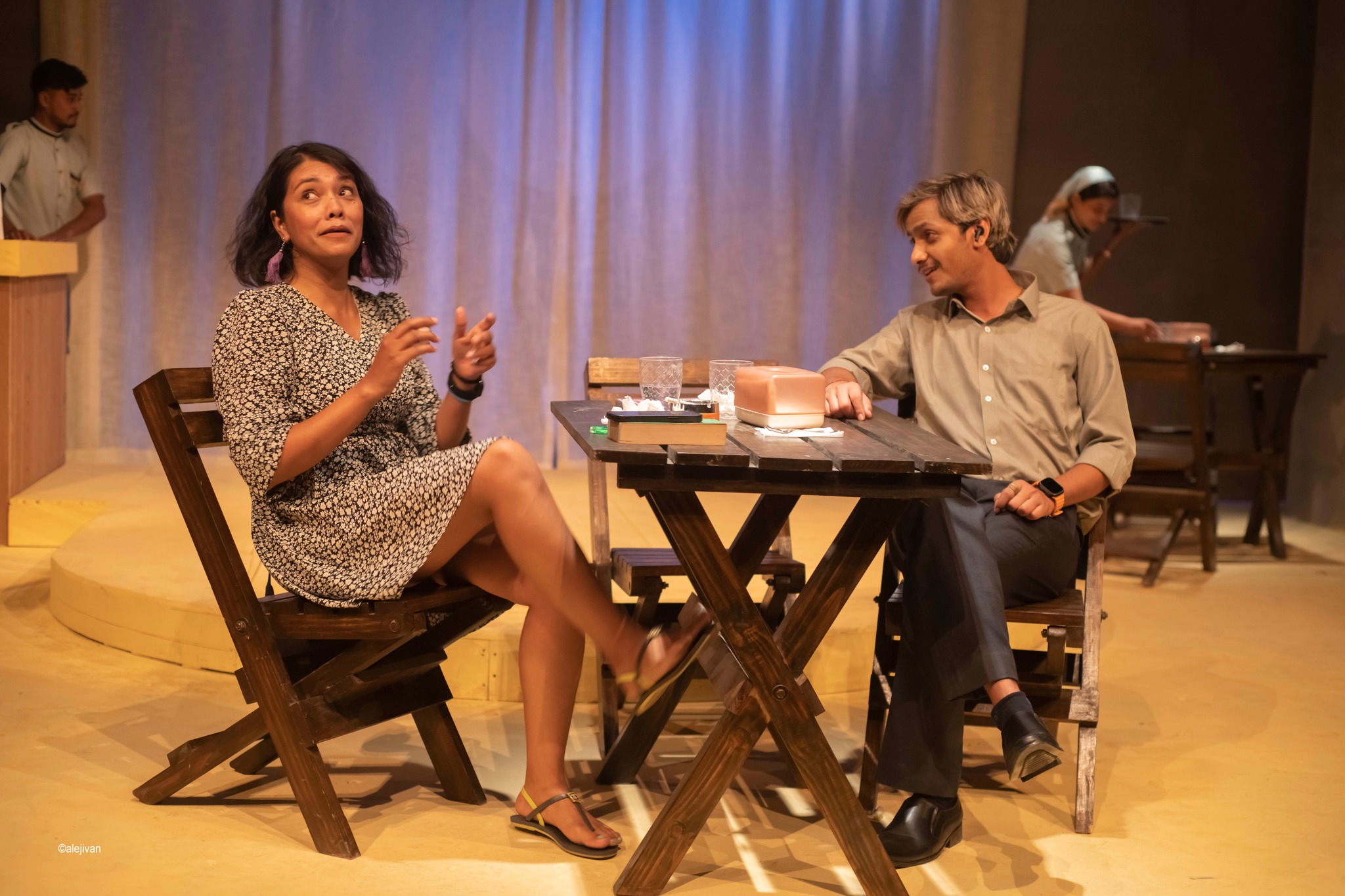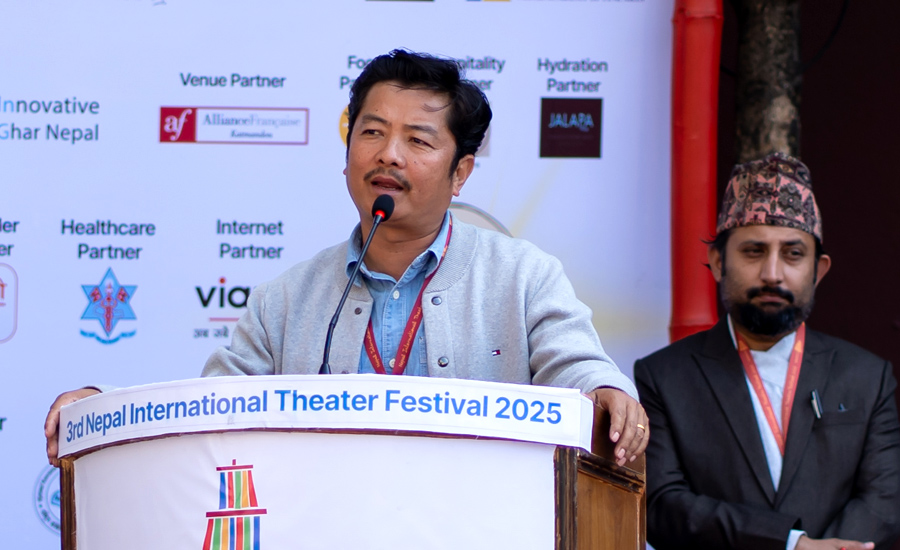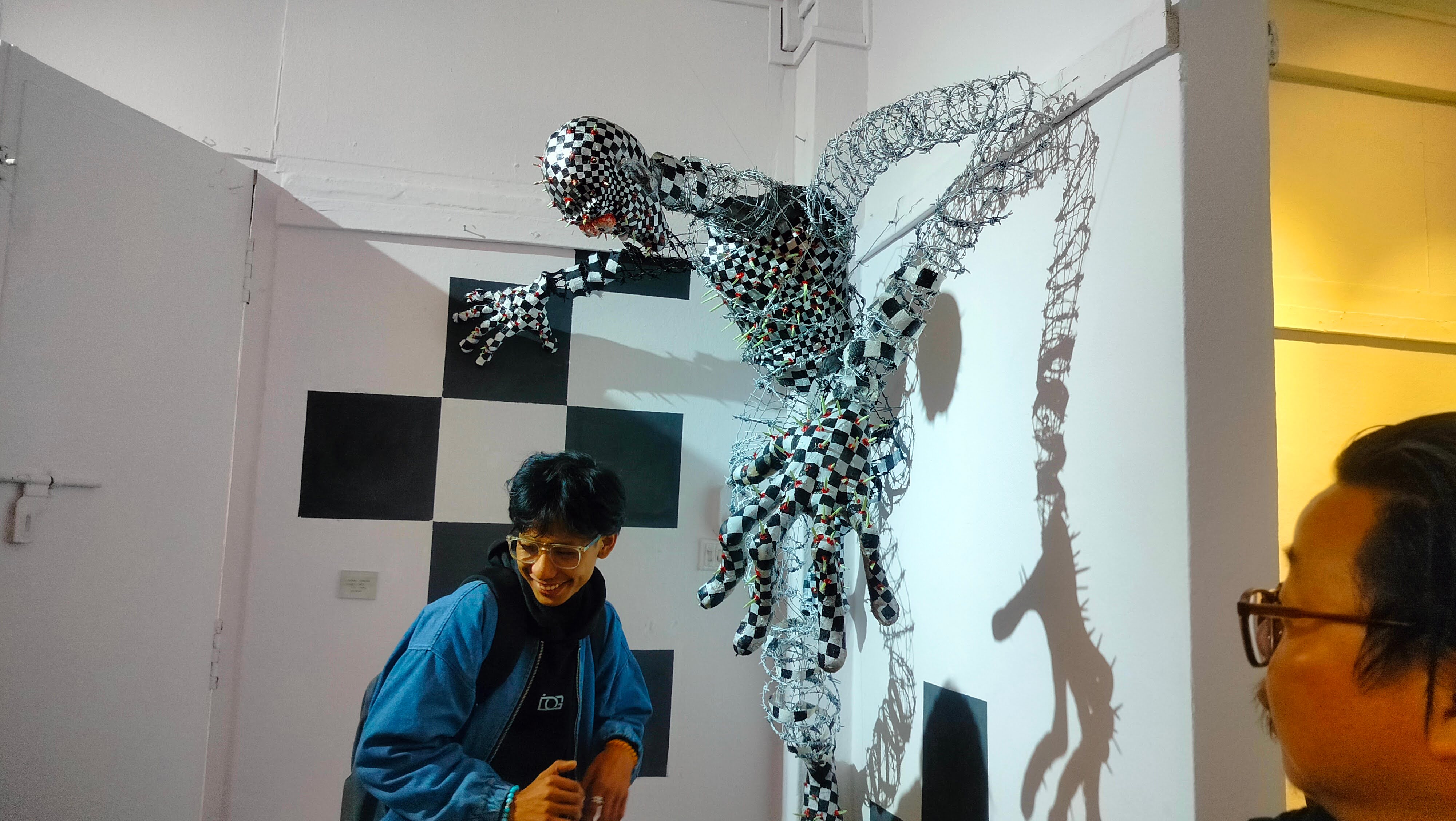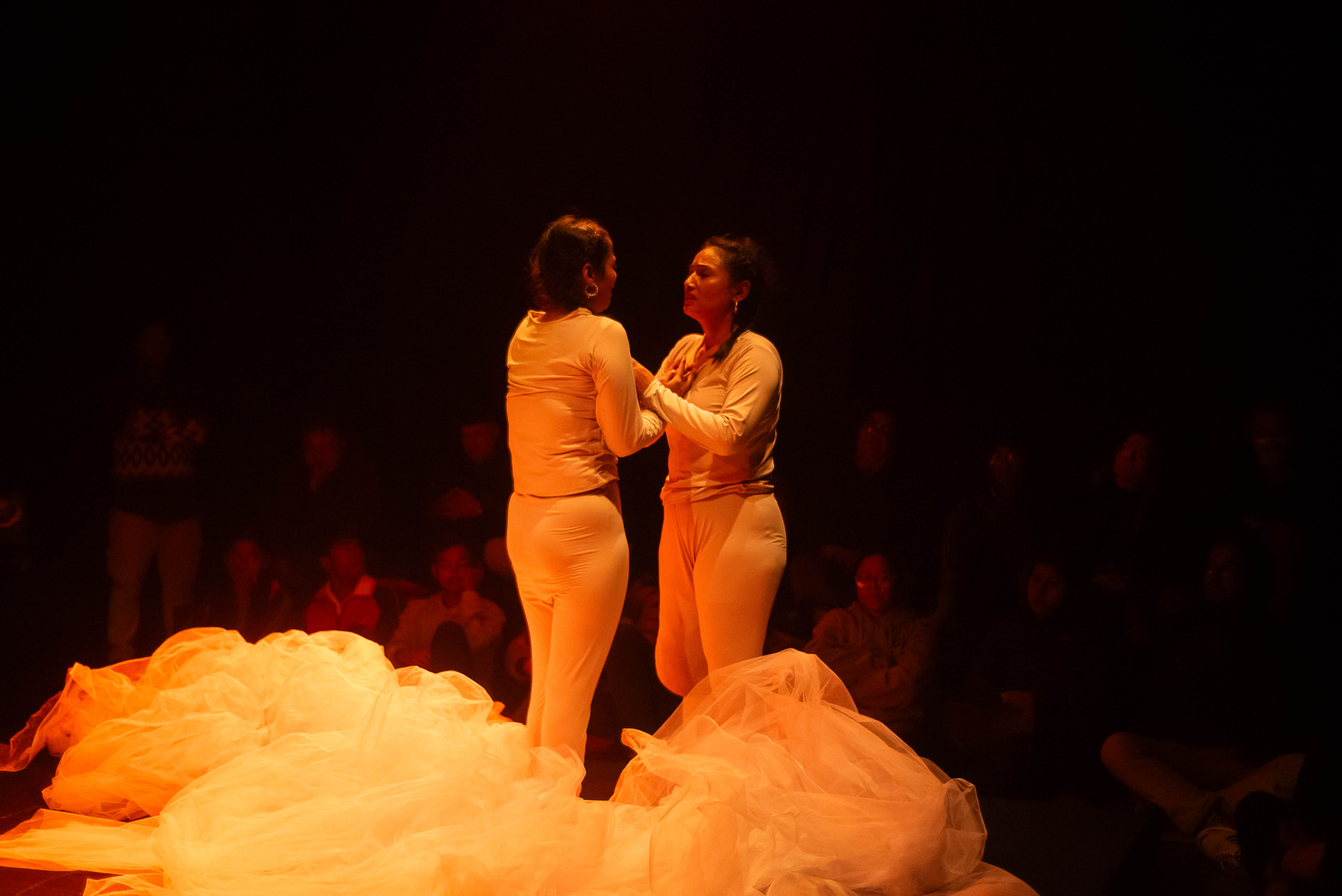
Audiences in a traditional theatre typically watch a play from a single side or a frontal perspective, with ample distance between actors and spectators. However, Gulaf, currently staged at Mandala Theatre in Kathmandu, deviates from this conventional setting. The play offers a unique experience, breaking away from the norm of being observed solely from a front view.
Directed by Ram Hari Dhakal, Gulaf engages audiences in an unusual setting. The two actors find themselves within a transparent white curtain, positioned to face each other on a stage placed at the centre of a hall, allowing spectators to surround it from all directions.
Departing from the traditional seating arrangement, the audience experiences a unique setup. Half of them sit on the floor, while the other half occupy long chairs covered with black cloth. This unconventional setting marks a new experience for both the audience and performers in Nepali theatre.
Yasodhara and her journey
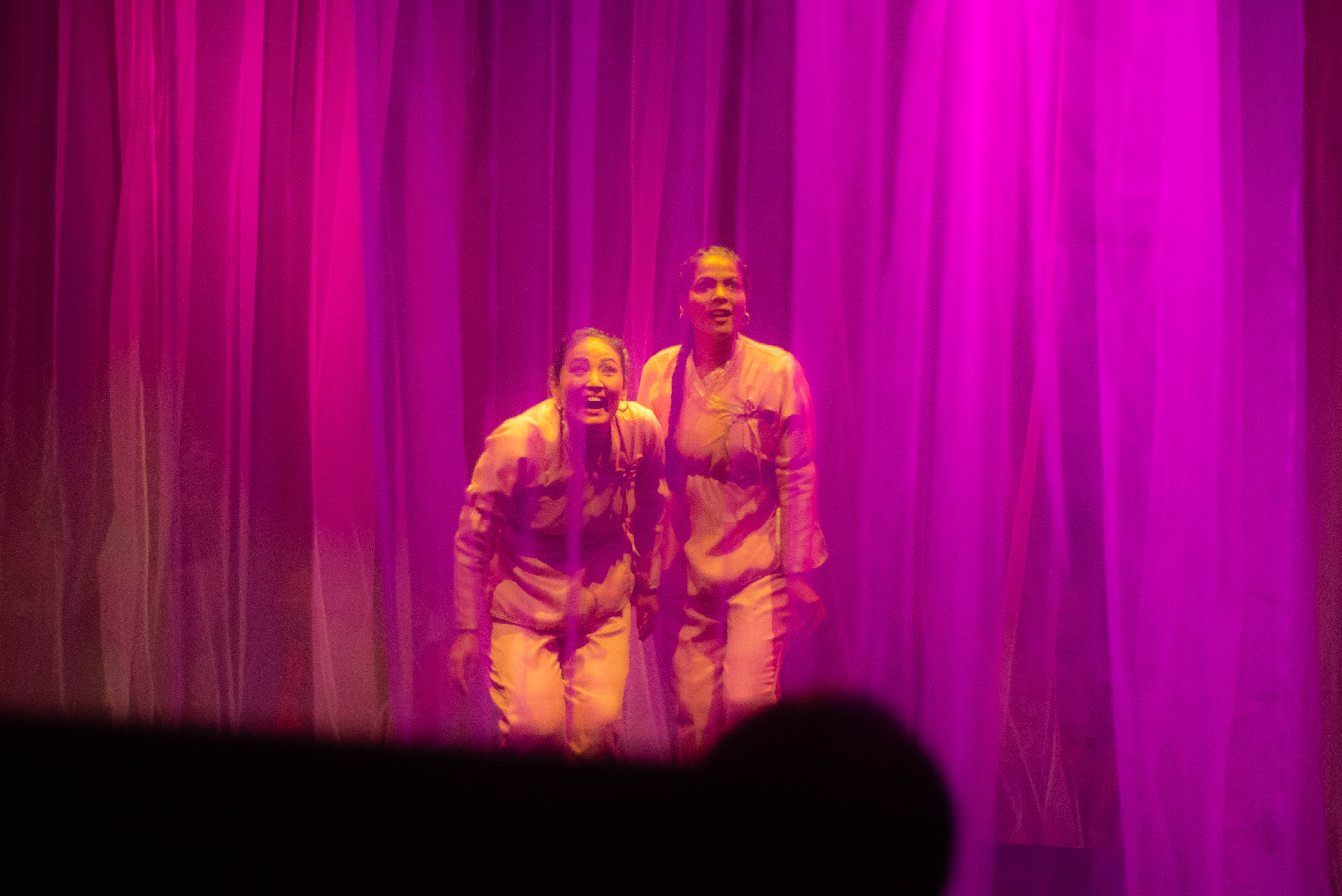
The tale of Siddhartha Gautam is a familiar one in various literary forms, yet the narrative of his wife, Yasodhara, has remained in the shadows. Hence, Gulaf aims to unfold the untold story of Yasodhara, delving into her emotions and challenges following Siddhartha’s departure from the palace, particularly after the birth of their child, Rahul.
While the process of giving birth involves intense labour pain for women, it is also a time of profound happiness at becoming a mother. It is a moment when a woman finds joy even during pain. Simultaneously, men share in the happiness of becoming fathers. However, the play takes a unique turn as Siddhartha chooses to leave the palace during this time of familial bliss.
The inspiration for the concept struck director Dhakal suddenly, triggered by his own experiences as a father. This led him to contemplate the mental state of Yasodhara and her struggles after Siddhartha’s departure, precisely when she needed him the most.
In the portrayal of Yasodhara in the play Gulaf, the character is uniquely represented by the actor duo Diya Maskey and Sarita Sah. One embodies Yasodhara’s physical presence, while the other captures her mind and soul.
The opening scenes of the play feature Maskey and Sah gracefully moving across the stage, conveying a sense of joy through their expressions and body language. However, this happiness is short-lived. As a voiceover declares, ‘Prince Siddhartha has left the palace,’ their expressions swiftly shift from joy to sorrow, introducing a palpable tension into the play.
An introduction to physical theatre
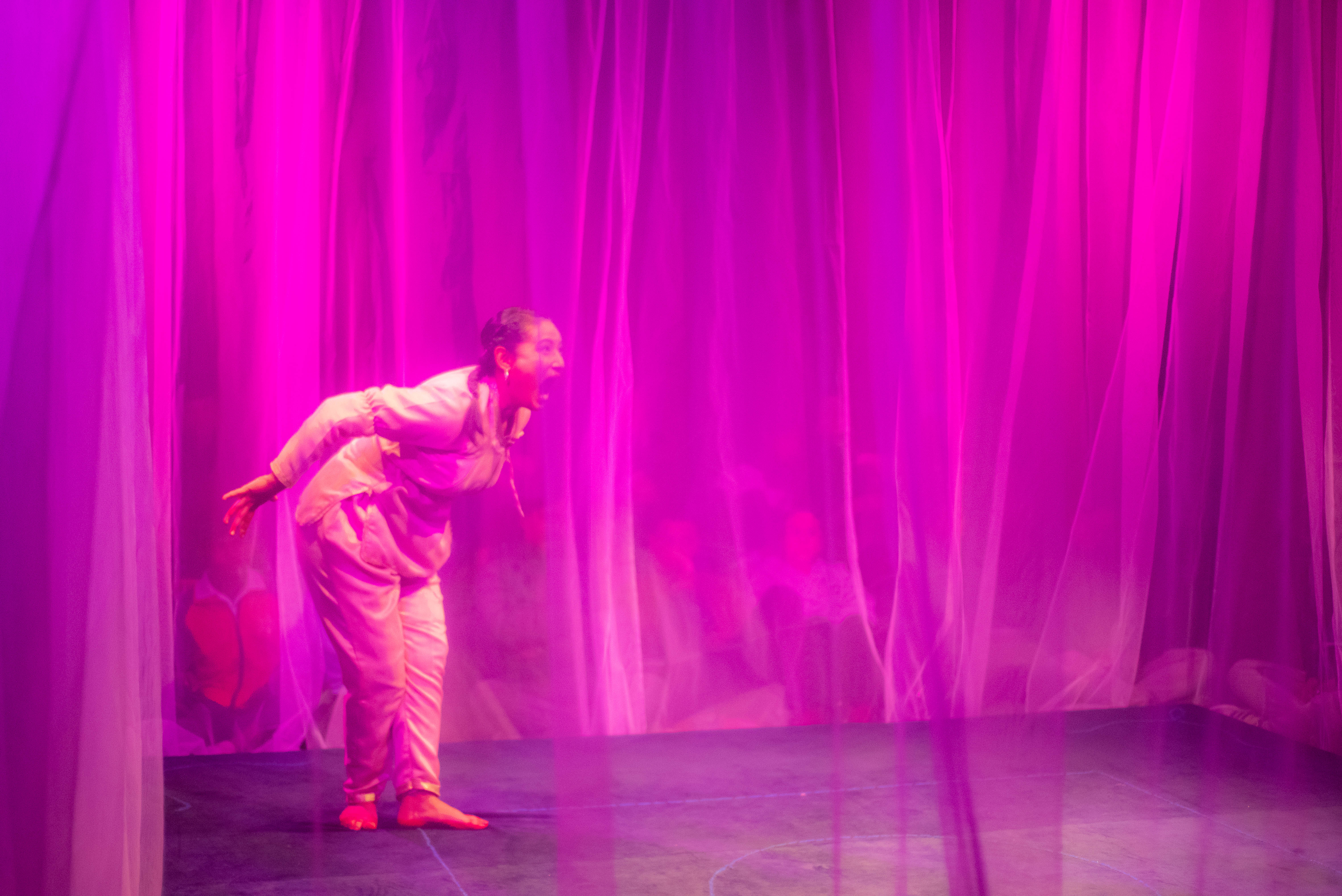
As the play is based on the physical theatre genre, it relies on non-verbal communication, omitting traditional dialogues. Instead, it skillfully employs elements such as sound, lights, and body movements to convey the narrative to the audience.
A notable example is seen when Yasodhara receives the unsettling news of Siddhartha leaving the palace. During this moment, a feedback sound effect resonates for nearly a minute. This deliberate use of sound effectively immerses the spectators in Yasodhara’s emotional turmoil, allowing them to relate to her disturbance. The impact is so profound that the audience members were observed feeling disturbed themselves, seeking refuge by closing their ears or glancing around. Credit is attributed to Dev Neuapane’s sound design for successfully creating this immersive experience.
Maskey and Sah, deserve commendation not only for their natural expressions that compensated for the absence of dialogues but also for flawlessly executing well-choreographed acrobatic moves in perfect synchronisation.
Gulaf transcends the conventional definition of a play; it serves as evidence that production can be both comprehensible and relatable even in the absence of dialogues. The play stresses the crucial role of light, sound, and body movement in effectively communicating a rich and engaging narrative.
Beyond merely narrating Yasodhara’s story, the play provides spectators with a unique perspective on the tale of Siddhartha Gautam.
With its 50-minute duration, Gulaf stands as a commendable effort for the advancement of physical theatre in Nepal, a genre seldom staged in Nepali theatres.
Dhakal, known for his experimental works, has previously delved into sensory theatre with productions like Inside/Outside and Chakra The Wheel. His avant-garde plays consistently generate excitement among theatregoers, offering them novel experiences. Once again, with Gulaf, he succeeds in delivering a distinctive theatrical experience. Don’t miss the opportunity to watch and enjoy this exceptional performance.
The play is being staged at Mandala Theatre till January 7.







